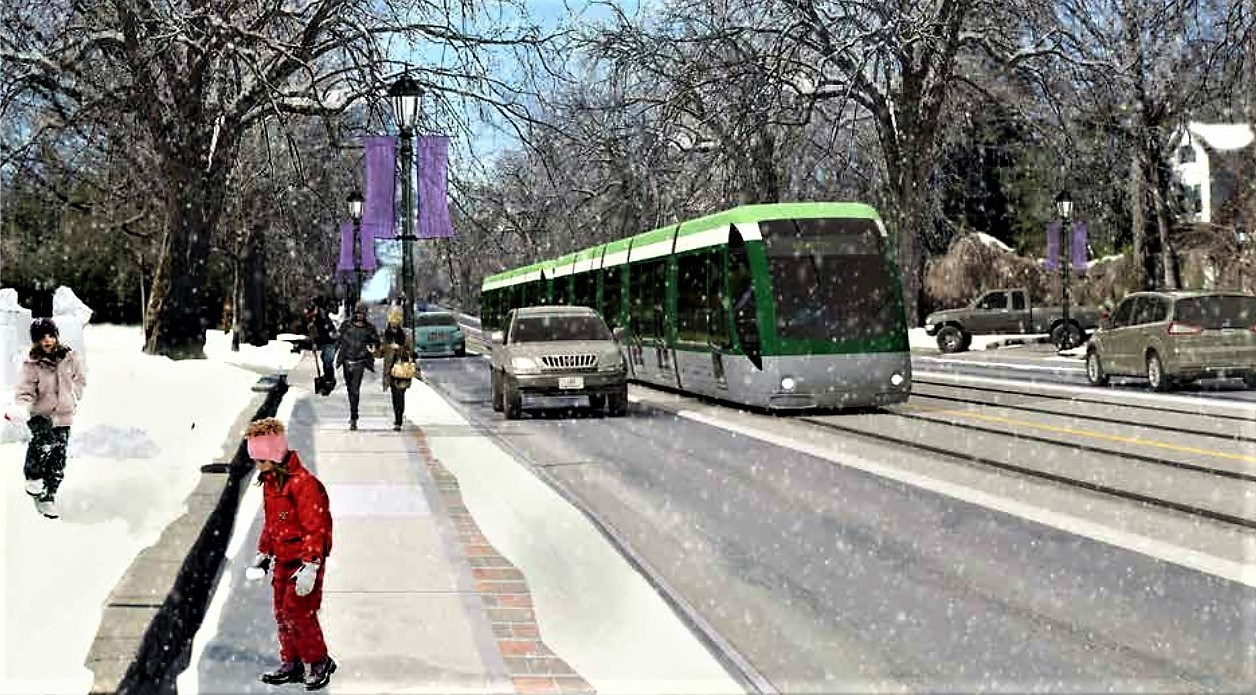
Part 2: Where does Brampton’s LRT project go from here?
Howls of “shame, SHAME,” rang out from the audience gallery of the Rose Theatre on Oct. 28, 2015. The special council meeting on the question of the LRT had been called for the evening of Oct. 27, but the vote that brought the protests didn’t happen until well after midnight. The council then led by former mayor Linda Jeffrey voted to reject her plan to extend the Hurontario Light Rail Transit line along Main Street to the Brampton GO station.
Council instead, by a 7-4 margin (strangely, Jeffrey, in the end, helped kill the Main Street option, but then later suggested she was confused when the decision was actually taken well after midnight) voted in favour of ending the fully funded LRT at the foot of Shoppers World. It is set to begin in Mississauga’s Port Credit neighbourhood, and end at Steeles Avenue — at least until a different alignment through Brampton can be agreed upon.
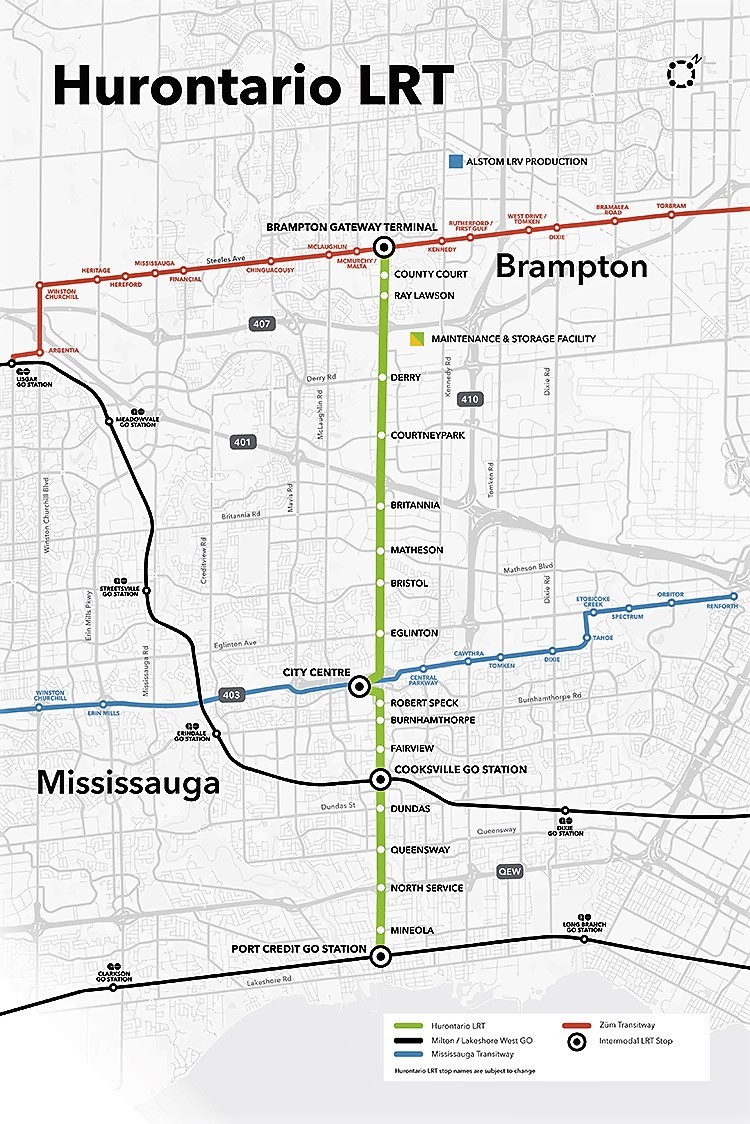
“I was disappointed. I knew at the time, and it has been proven correct I think, … that we had a window to say yes. People had a different opinion; they thought something else might be possible, and four years later we see the result of that vote,” said urban planner Chris Drew, a frequent commenter on transportation issues. “We see that Hamilton is moving forward, Mississauga is moving forward …”
For many who dreamt of a modern, higher-order transit service through downtown, this was a blow. Those calling for a Main Street route terminating at Brampton’s downtown GO station, then and now, speak about the economic benefits an LRT line would bring to the area’s stagnant business community. Brampton Board of Trade CEO Todd Letts is almost chomping at the bit to get the LRT going on Main Street, just a few metres from his office.
“What lessons can we learn [from Kitchener-Waterloo’s ION Rapid Transit]? Lesson number one is: Municipal council needs to be decisive. Lesson number two is: It’s not just about moving people, it’s about competitive advantage. Creating density, which is necessary to attract young talent,” Letts said.
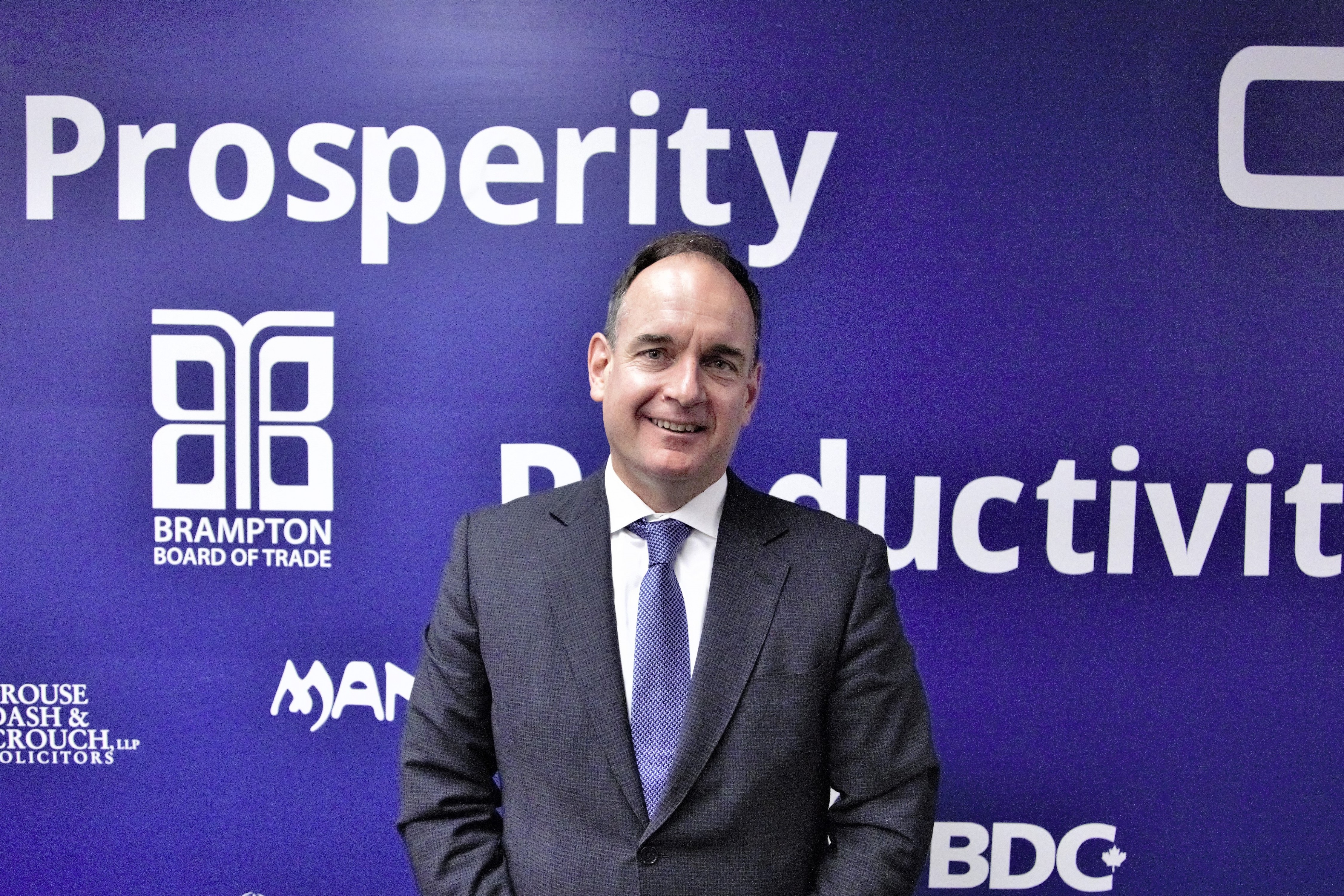
Brampton Board of Trade CEO Todd Letts
The ION line runs along the spine of Waterloo Region. In that one area, dubbed the Central Transit Corridor, $3.2 billion worth of development applications were recorded in and after 2011, when Waterloo regional council moved ahead with the project. In the ’90s, the total value of applications was less than a third of that, about $937 million.
Letts is obviously eager to capture similar success in Brampton’s downtown. He believes council has taken long enough to make a decision on the alignment. “The longer you delay a decision, the [more] opportunity continues to be missed and the [greater the chances that the] opportunity will be captured by another community. For example: In 2015, when council turned that decision down, we saw Hamilton get essentially what some citizens of Brampton thought was their money for transit.” Hamilton’s LRT project was back on track as of last March, after the province lifted its pledge to freeze $1 billion in funding.
This begs the question: If a Main Street LRT is the obvious panacea for downtown’s economic woes, why was it rejected in 2015, at a time when the province was offering to fully pay for its construction? Retired councillor Elaine Moore voted both against terminating at Brampton GO and in favour of stopping at Shoppers World, at Steeles Avenue and Main Street. One of her two former wards, Ward 1, encompasses the downtown area north of Queen Street. It stands to reason that her constituents could have benefited from the LRT on Main Street, yet she voted against it. She said she stands by that decision because there is just not enough capacity for economic growth along the corridor due to the area’s floodplain designation.
Higher order transit investment, for subways and LRT, focus on major urban corridors where billions of dollars of growth potential can transform an entire city’s fortunes. These areas often become unrecognizable compared to the missing development prior to these massive transit projects. Mississauga and Kitchener-Waterloo have already enjoyed billions of dollars worth of applications that have flooded in for projects along their LRT corridors.
When it comes to areas available for intensification along Main Street, Moore disagreed with the suggestion that it holds some development potential: “There’s zero.” The portion of Main Street north of Nanwood Drive is all designated floodplain, meaning that development is restricted. The presence of Special Policy Areas (SPA) — areas on which there are detailed directions for land use — create hard limits on the amount of development that can occur in the downtown core. The hardest caps are on SPAs 3A, 3B and 3C.
No new residential units are allowed in SPA 3C, but the regulations allow for 88,000 square metres of gross commercial floor space. SPA 3A allows for a maximum of 900 residential units with 41,000 square metres of gross commercial floor space, and 3B caps new residential units at 185, plus 45,000 square metres of commercial space.
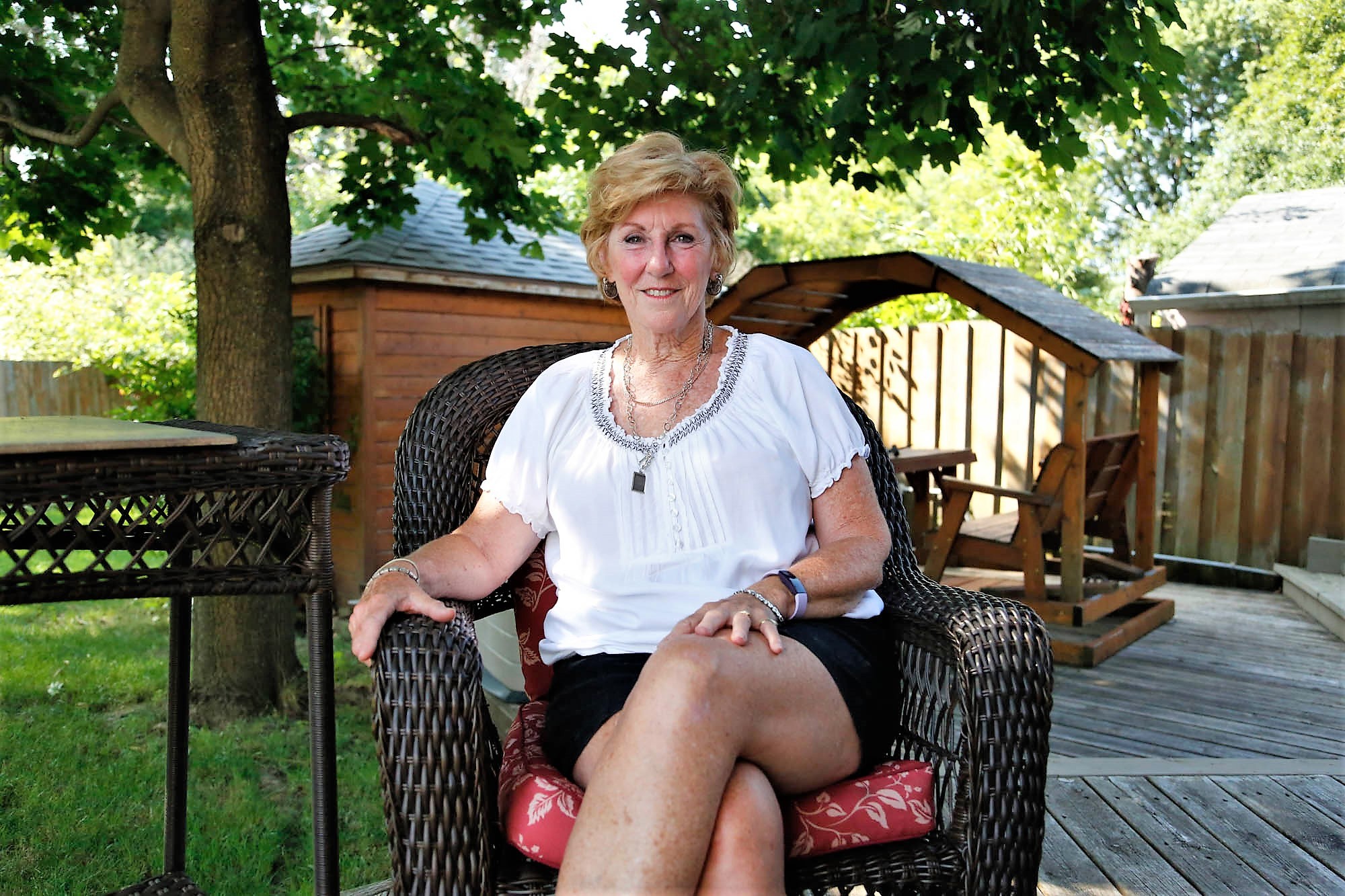
Former downtown Brampton councillor Elaine Moore
If the city were able to get that designation removed, “you come up with one solution that fixes the downtown and removes the cap … At least you have authority to negotiate. Right now, we don’t have that,” Moore added.
Specific SPAs cover the rough area between Wellington Street East and Church Street at the north end of Main Street, almost the entire downtown. Some development is allowed in the Nanwood Drive area, closer to Steeles Avenue, but heavy regulations requiring safe egress to flood-free areas mean that building here can be prohibitively expensive, a fact that may scare away developers, even with the attraction of a coming LRT.
“Why do you think that plaza [on Nanwood Drive] has stayed the way it has for the past 60 years?” Moore asked. “Because you can’t build [there]. You can renovate and you can remodel, but you cannot intensify on that site.”
Moore and other councillors who rejected the fully funded Main Street route in 2015 insisted they wanted LRT, just on a better corridor with far greater growth and ridership potential, a "made in Brampton solution" as they called it, instead of accepting a much lesser option being pushed by Jeffrey and her former Liberal government. But the routes Moore and others agreed to have studied, were taken off the table by the current council, when it voted to make Main Street the only option, immediately after the council term began.
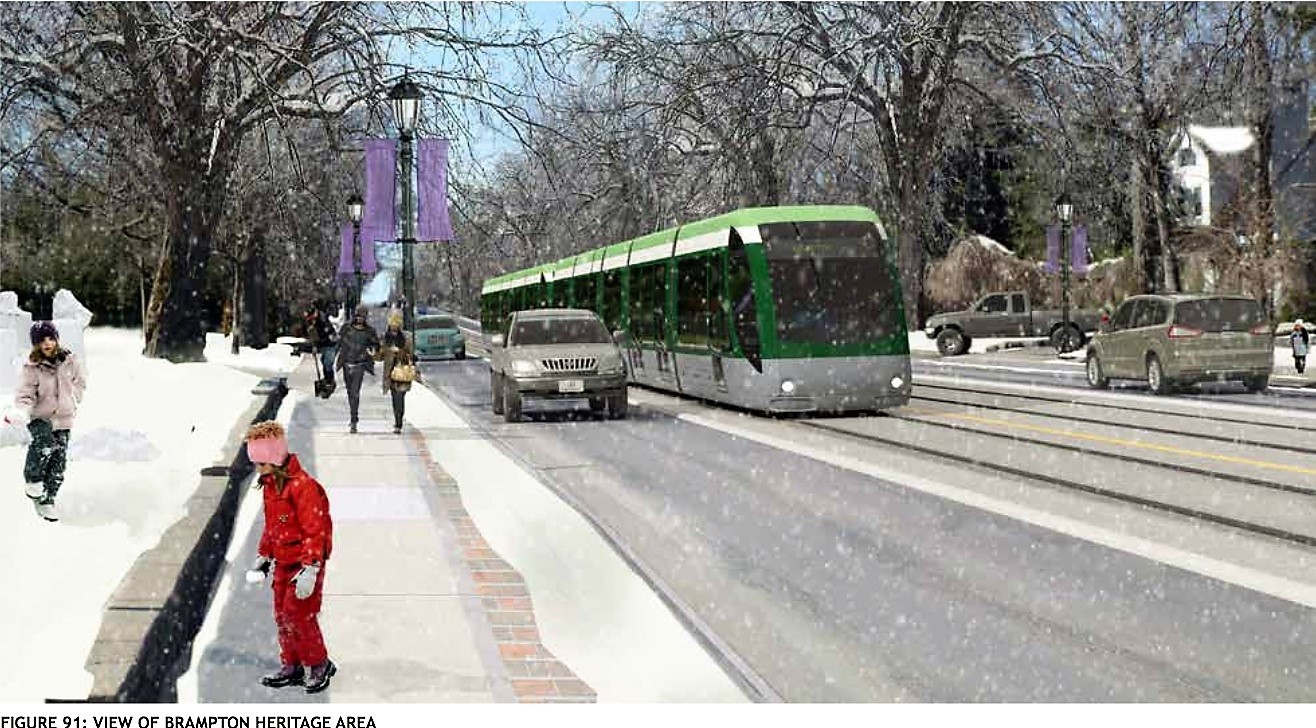
A rendering of the LRT on Main Street running through the heritage area
Pushing through an LRT on Main Street strikes Moore as a “horse-before-the-cart” solution. The Riverwalk project, which would construct more robust flood mitigation infrastructure along flood-prone Etobicoke Creek, would help in easing the caps on development. But as things stand downtown, it appears there’s no business case for developing the area with the current restrictions in place.
Steer Davies Gleave, the transit consulting firm commissioned by Metrolinx to do a benefits analysis and other assessment work for the Hurontario-Main LRT, at a cost of $16 million to Brampton and Mississauga, agreed.
The population of the Main Street area, according to the consultants’ assessment in the lead-up to the 2015 vote, will increase by a mere 1,500 to 11,300 between 2008 and 2031 with an LRT. That represents just 3 percent of total growth expected along the entire Hurontario-Main LRT corridor in that same time period. Employment growth along Main Street was expected to increase by only 200 employees in the same period. In contrast, Mississauga expects 60,000 new residents to take up homes in just the Square One vicinity along their LRT route.
An investigation by the Toronto Star in the summer right before the infamous vote showed that ridership would have been only a fraction of the capacity threshold for an underground LRT route, as Brampton Mayor Patrick Brown has pushed for. The average transit ridership at the time on Main Street was 200 per hour per direction, and 450 at peak hours, whereas the capacity needed to justify a tunneled LRT (the only option on the table at the time, as council in 2014 removed the Main Street surface option) was 15,000 for an underground route, according to Metrolinx. Despite the surface alignment being off the table, city staff, in June of 2015, used the non-right-of-way surface capacity when reporting to council that LRT could handle 7,000 riders per hour per direction.
A generous assumption, applying the peak ridership figure of 450 riders at the time, would mean that transit built in the area would be filled to only 3 to 6 percent of capacity, depending on whether the 15,000 or the 7,000 figure was used.
With the Main Street route dead in the water after 2015, McLaughlin Road and Kennedy Road were proposed as alternative routes. Both have the potential for ridership and intensification growth. The Queen Street Corridor is an area east of Main Street that the city is priming for intensification. Free of the floodplain, a Kennedy Road alignment could produce a mutually beneficial arrangement with the Queen corridor. LRT lines on either McLaughlin or Kennedy could act as a stimulus for building more of the affordable housing units Brampton desperately needs. The city's 2040 Vision document, supported by council as Brampton's strategy for future growth, calls for a higher order transit "figure-8" loop which would see either LRT or bus rapid transit cover a much larger area of the city with better development and ridership potential.
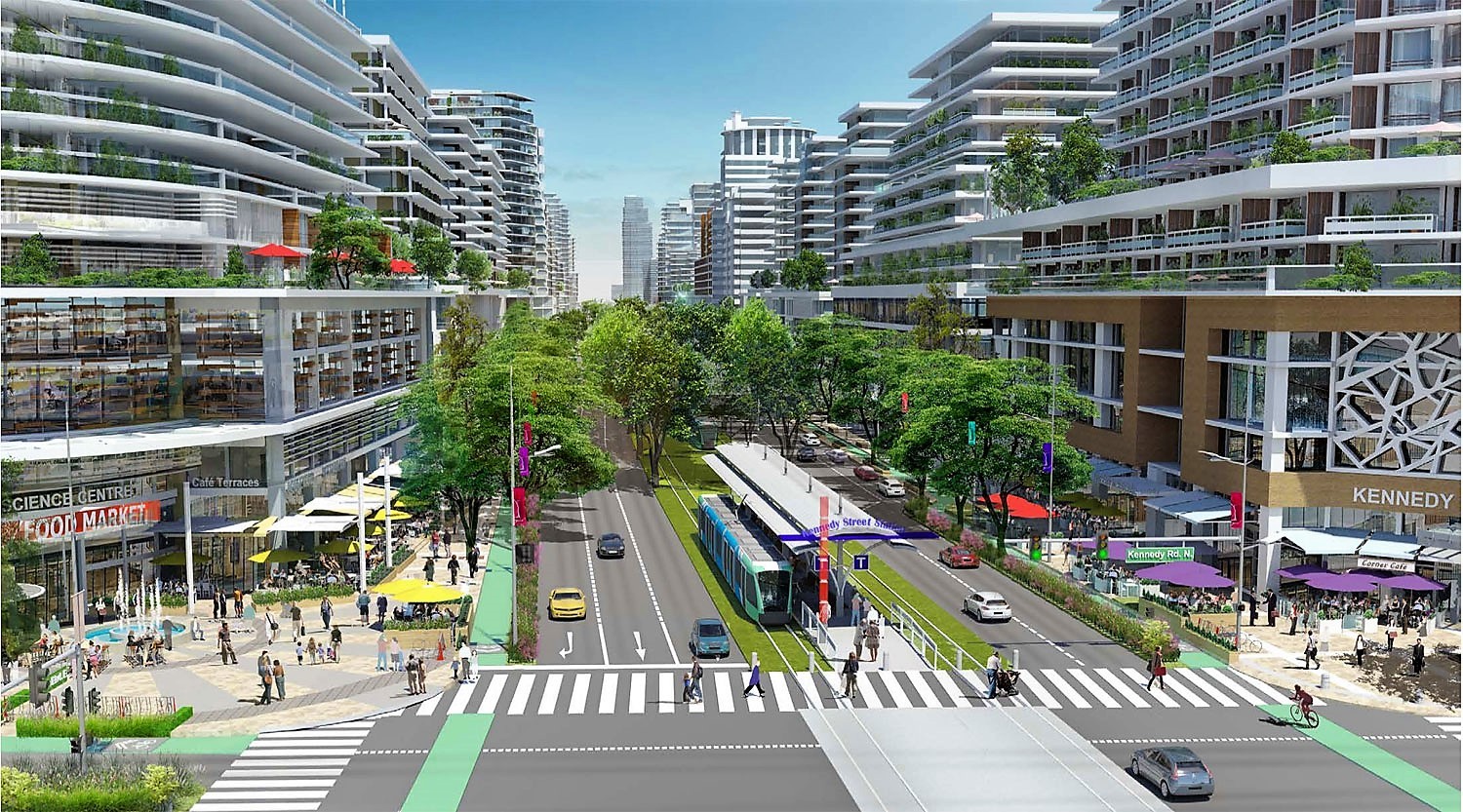
A Rendering of the LRT on Queen Street at Kennedy from the 2040 Vision document, which calls for a "figure-8" LRT loop
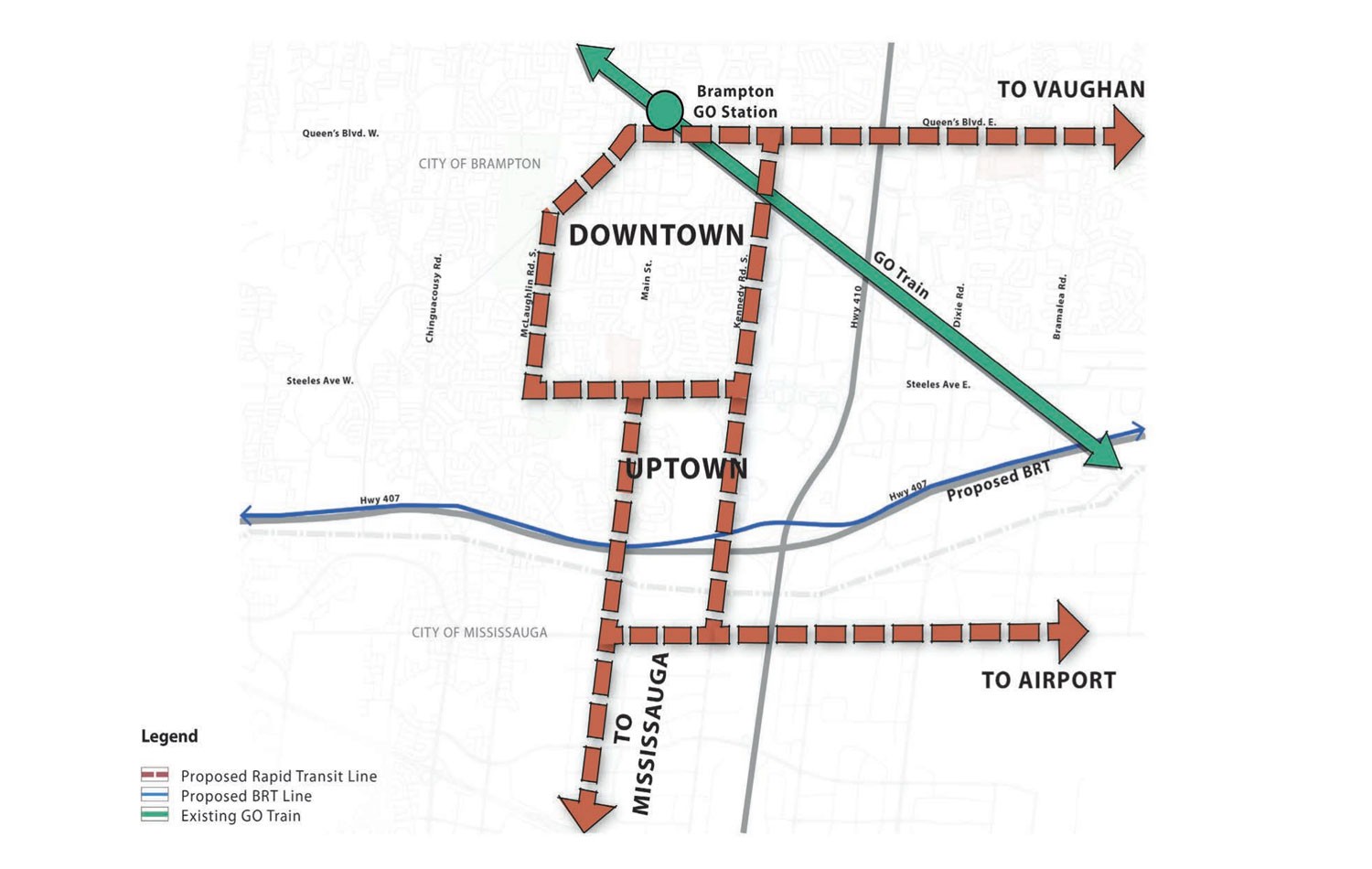
As alluded to by Mississauga Councillor Carolyn Parrish in 2015, there is a real danger of pricing low-income people out of the LRT corridor. The increase in value of land situated near higher-order transit lines, such as Toronto’s subway, raises property values and leads to exclusive high-value properties. Thought has to be given to creating equitable opportunities along the route.
Councillor Tom Galloway of Waterloo Region, who rode the ION Rapid Transit recently with The Pointer, pointed to a number of current and in-progress affordable-housing building sites along the Kitchener portion of the LRT.
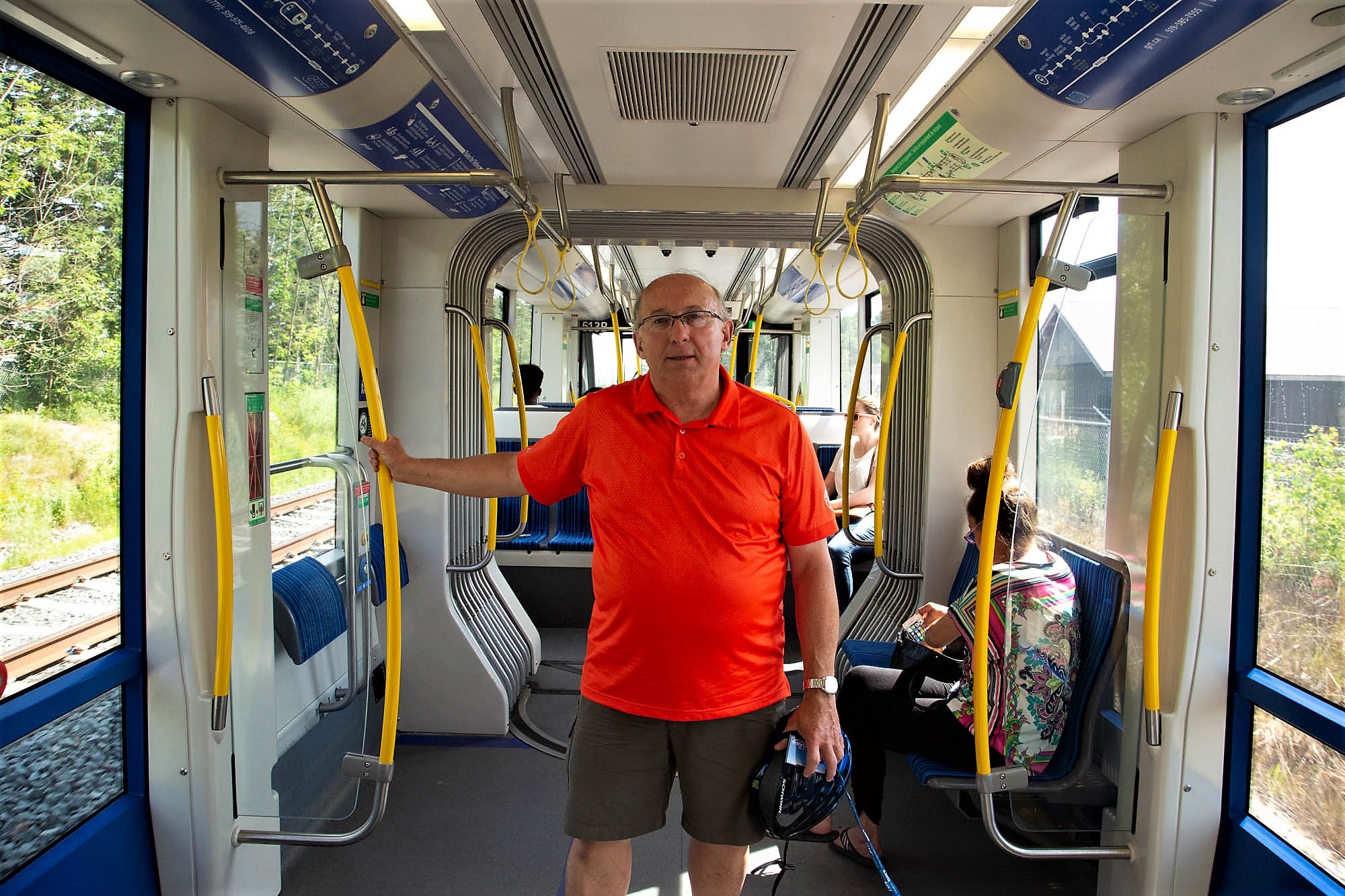
Councillor Tom Galloway of Waterloo Region
The Main Street route, as of the beginning of this current council term, is now being explored once again. The contention now is not over the alignment itself, but whether it should be an underground route or a surface one. Brown and Councillor Paul Vicente are at odds over the question. Brown wants the LRT to go underground near Nanwood Drive, and Vicente wants it to stay above ground.
Vicente, during an April council meeting, produced a letter by the board of trade that urged council “to leverage the existing Environmental Assessment that continues to remain valid, and to act forthwith to advocate that the Hurontario Light Rail extension align as closely as possible with the current Metrolinx HuLRT procurement process.” The letter was signed by Todd Letts.
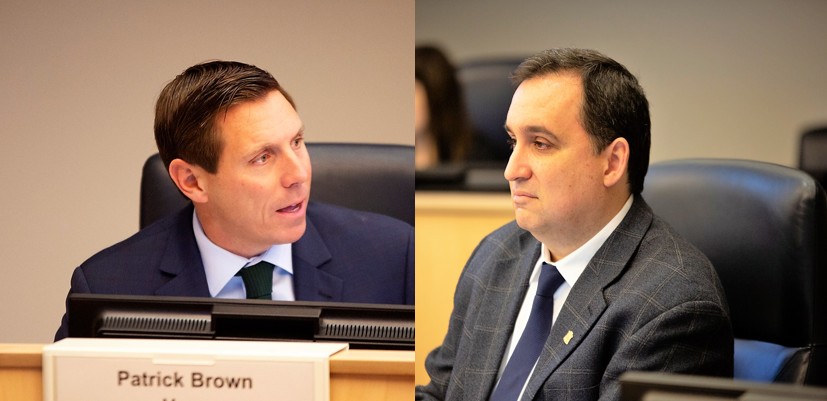
Mayor Patrick Brown challenged Councillor Paul Vicente's LRT facts earlier in the year
The letter calls for Brampton council to choose the cheaper ($400 to $450-million) surface option rather than the underground path, which could cost as much as $1.7-billion, as assessed by city staff. It's unclear if the staff figures have been properly tested or verified by any transit authority or firm that specializes in the area.
There are several inconsistencies in the narrative surrounding this latest set of disagreements.
First, no Environmental Assessment (EA) has been undertaken towards the LRT, as asserted by Letts’s letter. What has taken place is a Transit Project Assessment Process (TPAP), a preliminary study by the provincial transit body, Metrolinx. A TPAP is comparatively limited in scope.
Second, the projected costs of the routes don’t add up. Phase 1 of ION Rapid Transit is a 19 km alignment with 19 stops through two municipalities at a cost of $819 million — $869 million if cost overruns are included. The line is not straight and is much more complex than Brampton’s straight-shot Main Street segment. The per-kilometre cost of the project comes out to $45.7 million. The much shorter and straighter Brampton Main Street surface route is just under 4 km between Steeles Avenue and Brampton GO. How can that configuration cost $100 million per kilometre when the ION’s was less than half of that?
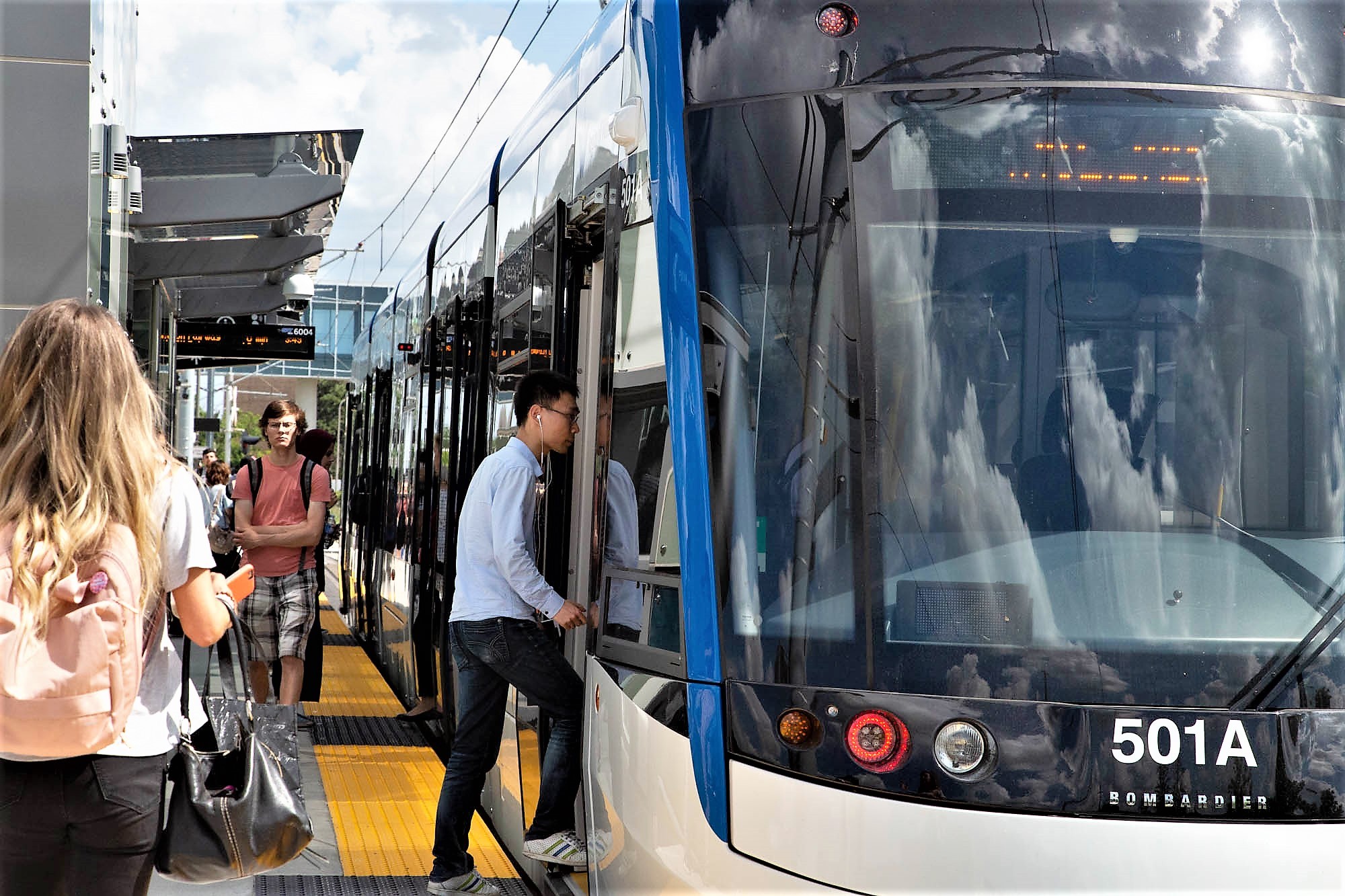
Kitchener-Waterloo's brand new LRT
The Pointer put this discrepancy to the City of Brampton for clarification. Staff did not respond to the inquiry by deadline.
Letts explains that “the current cost estimate of any route will change. The longer you delay, the higher it will go.”
The province, leading up to the 2015 vote, had promised to fully fund the project with an investment of $1.6 billion, with about $400 million going towards Brampton’s portion.
“The Brampton route was easy-peasy; it was [to be] done as cheap as possible. It’s a straight line; there’s no obstacles, there’s no extra bridges that have to be built, there’s nothing that has to be done,” Chris Bejnar, of Citizens for a Better Brampton, told The Pointer. “It should be on the lower end of your per-kilometre scale.”
The underground route’s cost estimate is inconsistent as well. This is not the first time council has considered tunnelling the LRT. In the closing days of Susan Fennell’s final term as mayor in 2014, council voted to no longer study a surface route. At some point in the transition between her administration and that of Linda Jeffrey, the surface route was back on the table. A few months after the October 2015 vote, the tunnel option was re-explored but also voted down unanimously. The cost estimate at the time for a tunnel: between $410 million and $570 million. Staff’s estimate has increased by 198 percent since 2016.
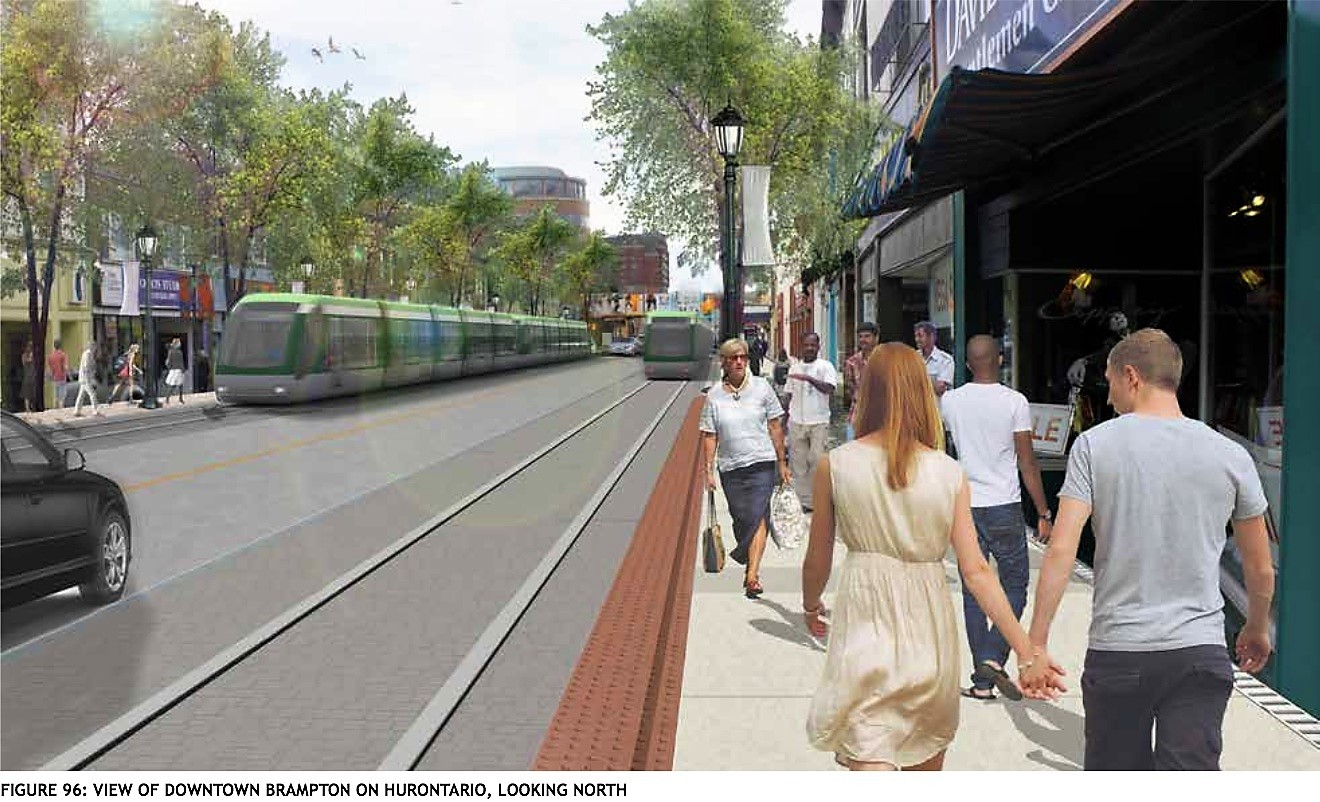
Rendering of the proposed Brampton LRT downtown
Then there’s the issue of the streetscape. Main Street, in its entirety, is a four-lane road. Putting an LRT on the route would mean putting the street on a diet. Kitchener was able to accommodate a lane reduction in some areas, however, the ION runs only one way in those parts of the city. A two-way LRT on Main Street does not seem feasible.
“We all go down and check out the ION [and say], ‘Gee, look how great it is.’ But are they questioning how can they build this for $850 million when we have a 3 km section that costs $450 million?” Bejnar said.
The original Main Street was built in the days of horses and buggies, when wider roads were not needed. The portion south of Wellington Street features many heritage homes, which some local residents hope to protect. Some have worried that vibrations from an LRT would crumble the foundations of homes more than a century old. Critics of the heritage argument have countered that European LRTs and subways have long run alongside much older properties with no significant problems.
Whatever the next steps are in determining the course of the LRT, a long list of evidence-based facts, not claims by those with an agenda, will have to be agreed upon. And a laundry list of issues will have to be dealt with before passengers, and the city, are able to reap the rewards.
Email: [email protected]
Twitter: @mansoortanweer
Submit a correction about this story


